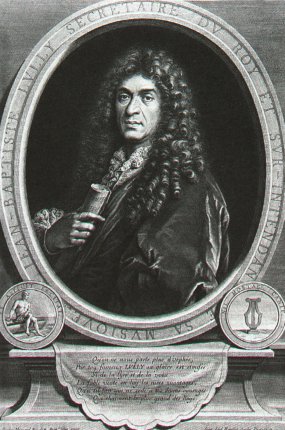© 2016 All Rights Reserved. Do not distribute or repurpose this work without written permission from the copyright holder(s).
Printed from https://www.damninteresting.com/curio/do-not-go-lulled-into-that-good-night/

While today’s vision of the conductor is that of the be-tuxedoed individual standing in front of an orchestra holding a thin strip of wood, the baton is actually a relative newcomer to the musical world. Before its introduction in the 19th century, conductors used any rod-shaped object that happened to be handy, everything from a rolled-up musical score to a violin bow—or, in the case of Jean-Baptiste Lully, master of music and sycophant to Louis XIV, a walking cane.
Often considered the founder of the modern orchestra, due to his fixing its basis in a five-part string section and ensuring the dominance of the violin family over the viols, Lully conducted not by waving his cane like a lance at his musicians, but by raising his long, heavy, gilded, and ribbon-bedecked ambulation accessory up and down in time like a drum major, alternating between striking it on the floor and thrusting it straight up in the air. For a man of Lully’s temper, this was perhaps not the wisest choice. While conducting the orchestra in a rehearsal of his rendition of Te Deum, to be performed to celebrate the King’s recovery from surgery, the composer grew furious at the musicians’ inability to do quite what he wanted, and struck the floor particularly hard. Unfortunately, he had failed to notice that his foot was in the way.
Unless he was a particularly melodious screamer, the Te Deum’s harmony was presumably further spoiled by Lully’s subsequent howl of pain. The injury was substantial, and in the following days, infection set in. Being a dancer, Lully refused to have his leg amputated. Gangrene migrated upwards from his foot, settled in his brain, and killed him.
Curiously, the reciprocating cane method of conducting has not been revived by the original instrument movement.
© 2016 All Rights Reserved. Do not distribute or repurpose this work without written permission from the copyright holder(s).
Printed from https://www.damninteresting.com/curio/do-not-go-lulled-into-that-good-night/
Since you enjoyed our work enough to print it out, and read it clear to the end, would you consider donating a few dollars at https://www.damninteresting.com/donate ?